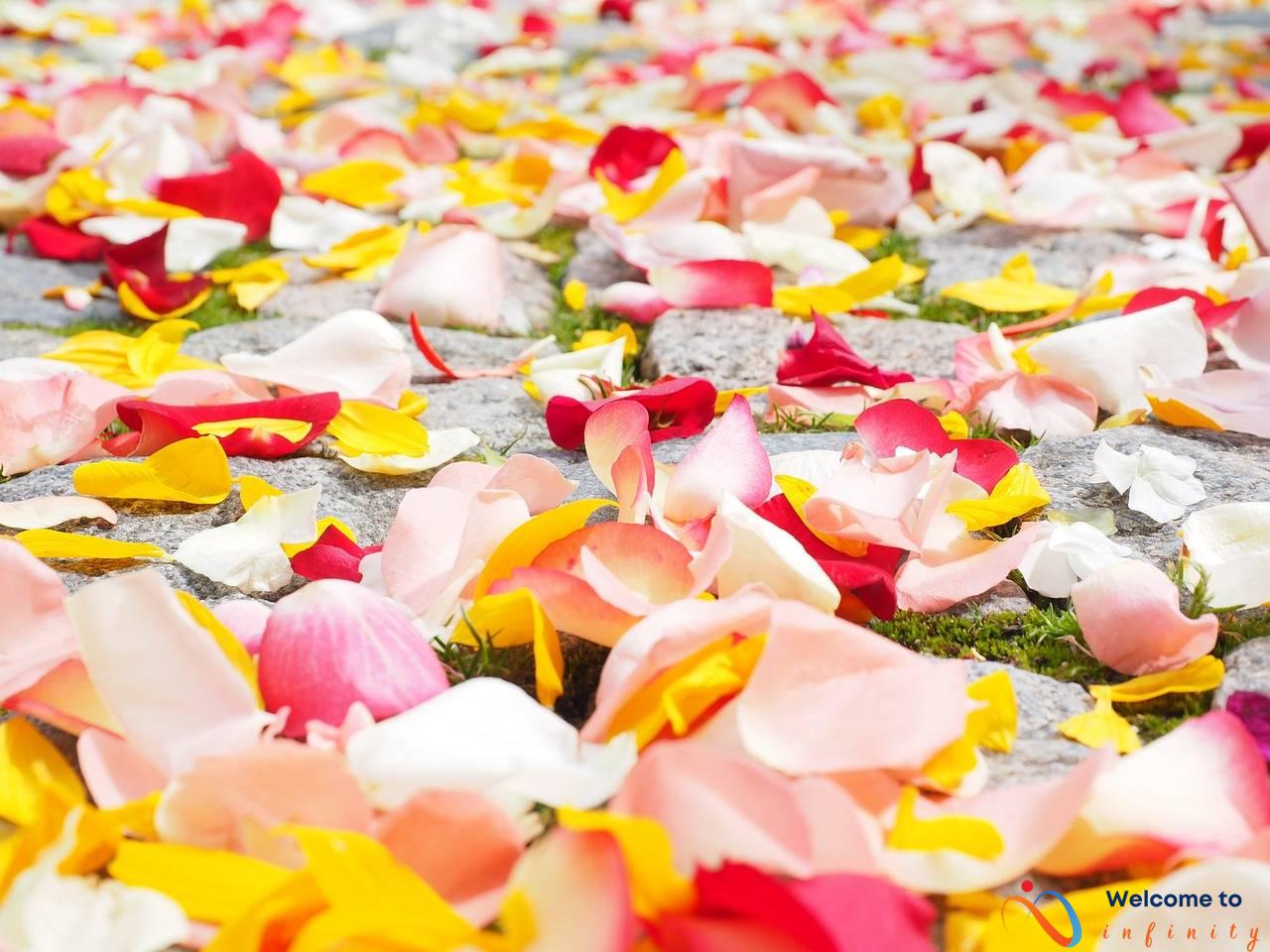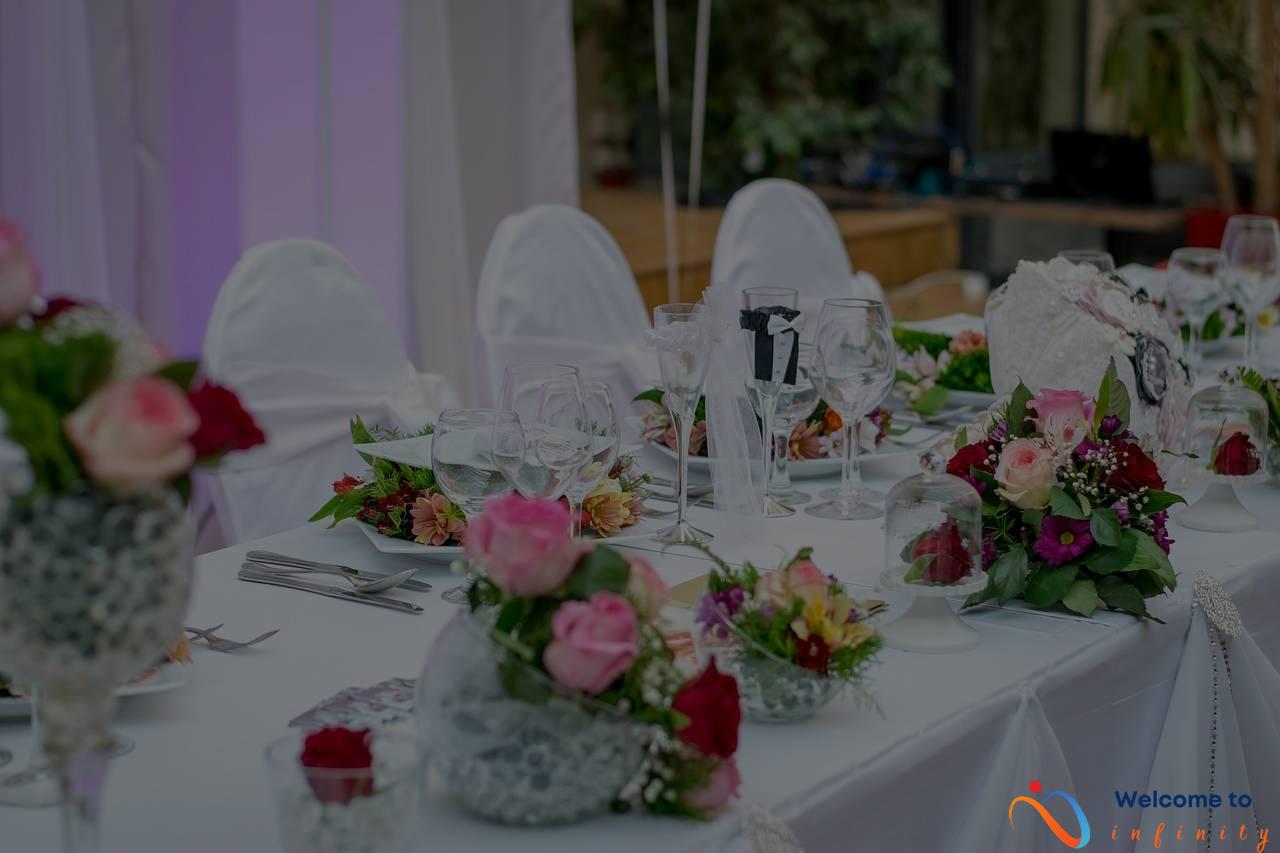Traditional crafts are a treasure trove of art and creativity that have been passed down for generations in different cultures around the world. These artisanal creations are not just beautiful to look at, but also represent the traditions and history of the people who make them. From India to Japan, Mexico, and africa, traditional crafts are a reflection of cultural diversity and the depth of human creativity.
India is famous for its intricate embroidery, stunning pottery, colorful textiles, and vibrant jewelry. Each state and community brings unique techniques, motifs, and materials to create traditional crafts that are both timeless and contemporary. From the Kutch region's vibrant Bandhani to chikankari embroidery, India has something for every art lover. The richness of Indian culture is reflected in the exquisitely crafted traditional crafts that have become a symbol of its heritage.
Japan is no less when it comes to traditional crafts. Its delicate art of origami has captured the imagination of the world for centuries, with intricate paper folding techniques that create stunning shapes and designs. The ancient technique of shibori dyeing, using unique folding and binding methods, creates beautiful patterns on fabric. Kirigami, a form of paper cutting, is another lesser-known art that requires precision and skill to create intricate designs. These traditional crafts are a testament to Japan's artistic sensibilities and the beauty of simplicity.
Mexico's traditional crafts are a vibrant reflection of its cultural heritage. Papel picado, the art of cutting intricate designs on paper, is an essential part of Mexican celebrations and festivals. Talavera pottery, with its colorful hand-painted designs, has become a symbol of Mexico's cultural identity. Both these crafts showcase the rich history and tradition of Mexico and its people.
African traditional crafts are also diverse and unique, showcasing the continent's cultural richness. The ancient art of basket weaving, using natural fibers, has been used for centuries to create beautiful containers and functional objects. African beadwork, with its intricate patterns and designs, has been used for both decoration and storytelling for centuries. These traditional crafts are a testament to Africa's creative spirit and its deep connection to the natural world.
In conclusion, traditional crafts from different cultures are a testament to the creativity and ingenuity of humanity. They showcase the diverse traditions and history of different regions and communities, and are a reflection of the rich cultural heritage of the world. These artisanal creations are timeless, beautiful, and continue to inspire and surprise art lovers around the world.
India
India is a country with a rich cultural heritage, and this is evident in their traditional crafts. From the stunning pottery of Khurja to the intricate embroidery of Chikankari, the diversity of Indian crafts is simply breathtaking. Indian artisans have been creating extraordinary handicrafts for centuries, and their work serves as a testament to the country's rich cultural heritage.
One of India's most famous crafts is embroidery. With a variety of styles and techniques, embroidery is an art form that is deeply intertwined with India's culture. One of the most popular embroidery styles is Chikankari, which uses delicate and intricate stitch work to create beautiful patterns on fabrics such as cotton, silk, and muslin. Another popular style is Phulkari, which is known for its bold, floral designs embroidered on brightly colored fabrics.
India is also famous for its pottery. Khurja, a small town in Uttar Pradesh, is renowned for its pottery, which is known for its intricate designs and beautiful colors. The pottery of Khurja is used for a variety of purposes, from daily use to decorative pieces, and is appreciated both for its practicality and its aesthetic value.
Additionally, the state of Rajasthan is home to the famous Blue Pottery, which is known for its unique blue-green color. This style of pottery is created using a blend of quartz, stone powder, and glass, and is famous for its intricate floral designs.
In conclusion, India's traditional crafts are a reflection of the country's rich cultural heritage. From the exquisite embroidery to the stunning pottery, these handicrafts showcase the skill, creativity, and passion of Indian artisans. So, next time you're in India, make sure to explore its various regions to see the diversity of its traditional crafts that are a rich source of inspiration and beauty.
Japan
Japan is renowned for its unique traditional crafts, including the intricate art of origami and the ancient technique of shibori dyeing. Origami is the Japanese art of folding paper into intricate shapes, creating beautiful decorative objects. The history of origami can be traced back to the 17th century, where it was used for ceremonial purposes in Japanese culture. Today, origami is enjoyed worldwide and has become a popular crafting hobby.
Kirigami, a variation of origami, is the art of paper cutting. While similar to origami, kirigami involves cutting and folding paper to create 3D designs. It is a lesser-known art but one that has a long history in Japanese culture.
Another traditional craft in Japan is shibori dyeing, a technique of creating intricate patterns on fabric using unique folding and binding methods before being dyed. This ancient technique has been used for centuries to create textiles that are both beautiful and functional.
| Origami | Kirigami | Shibori Dyeing |
|---|---|---|
| Origami is the art of folding paper into intricate shapes to create beautiful decorative objects. | Kirigami is a variation of origami, involving cutting and folding paper to create 3D designs. | Shibori dyeing is a technique of creating intricate patterns on fabric using unique folding and binding methods before being dyed. |
Traditional crafts play a vital role in Japan's rich cultural heritage, and these techniques have been passed down from generation to generation. Today, Japan's traditional crafts are highly respected worldwide and admired for their beauty and precision.
Origami
Origami is a traditional Japanese art that involves folding paper into intricate shapes and designs. It has been practiced in Japan for centuries and has become a beloved pastime for people of all ages worldwide. The word “origami” comes from two Japanese words, “ori” which means “to fold,” and “kami” which means “paper.”
Origami has many different styles and techniques, ranging from simple designs for beginners to more complex creations for the advanced folder. One of the most popular types of origami is the iconic paper crane, which is said to bring good luck and health.
The history of origami can be traced back to the Edo period in Japan (1603-1867). At that time, paper was a luxury item and was used mainly by the wealthy. It was during this time that origami began to gain popularity as a form of entertainment for the upper class.
Today, origami has become more accessible to people around the world. Many books and tutorials are available, and enthusiasts gather at conventions and exhibitions to share their creations and techniques. Origami has also been used in fields such as art, science, and engineering.
In conclusion, origami is a beautiful and intricate art that has captured the hearts of people all over the world for centuries. From the simple designs to the complex creations, it is an art form that requires patience, skill, and creativity. Whether it's for decoration or entertainment, the beauty of origami never ceases to amaze.
Kirigami
Kirigami is a lesser-known Japanese art form that involves cutting and folding paper to create intricate shapes and designs. It is a variation of the more well-known origami, which involves only folding paper. Kirigami allows for more creativity and versatility, as the cuts enable the artist to create more complex shapes and designs.
The history of kirigami can be traced back to the Heian period in Japan, which lasted from the 8th to the 12th century. It was originally used to create designs on paper for religious ceremonies. Over time, it evolved into a popular form of art and entertainment, with artists creating everything from delicate lace-like designs to intricate pop-up books.
There are many variations of kirigami, each with its own unique style and techniques. Some of the most popular include pop-up cards, kirigami flowers, and snowflakes. These designs can be created using a variety of paper types, from thin tissue paper to thicker cardstock.
Kirigami has gained popularity in recent years as a unique and creative way to create handmade gifts, decorations, and even jewelry. With its wide range of designs and techniques, anyone can try their hand at kirigami and create something beautiful and unique.
Overall, kirigami is a beautiful and intricate art form that deserves more recognition and appreciation. Whether you're a seasoned artist or just starting out, it's a fun and rewarding way to express your creativity and explore the world of traditional Japanese crafts.
Shibori
Shibori is a traditional Japanese craft where fabric is dyed using a fascinating method of folding and binding. This technique creates intricate patterns and designs on the cloth that are unique and truly mesmerizing. The word Shibori actually means “to squeeze” or “to wring” in Japanese, and it involves folding and shaping the fabric before it is dyed.
Each design is created by folding the fabric in a specific manner and then securing it with thread or rubber bands before it is dyed. The areas of the fabric that are tightly secured will not absorb the dye, leaving behind white spots on a colored background. The result is a beautiful and distinctive pattern that cannot be replicated by any other means.
There are several kinds of Shibori techniques, including Miura, Kumo, Itajime, and more. In Miura Shibori, the fabric is accordion-folded and then wrapped around a cylindrical object before it is dyed. Kumo Shibori involves pleating and binding the fabric with a thread to create a spider-web-like pattern. Itajime Shibori involves using wooden blocks to create geometric shapes on the fabric before it is dyed.
Shibori has been a part of Japanese culture for centuries, and its popularity has only grown with time. The traditional technique has been adapted by modern designers and artists across the world and has become a trend in the fashion industry. From scarves and dresses to home decor and accessories, Shibori has become a versatile craft that can be used in several ways.
In conclusion, Shibori is a fascinating craft that showcases the beauty of traditional Japanese artistry. Its intricate patterns and designs are a testament to the skill and creativity of the artisans who practice it. Shibori has now become a global phenomenon, inspiring fashion designers and artists from different cultures to incorporate the technique into their creations. It is truly a unique and captivating craft that will continue to enchant people for many years to come.
Mexico
Mexico is a country steeped in history and culture, and its traditional crafts reflect this heritage. Papel picado is one of the most popular forms of Mexican crafts, and it involves cutting intricate patterns into colorful pieces of tissue paper. These delicate decorations are often used during celebrations and festivals, adding a vibrant touch to the festivities. Papel picado is also a way to tell stories, as the patterns often depict symbols and images that have significant meaning in Mexican culture.
Talavera pottery is another traditional craft that has become a symbol of Mexican culture. This pottery is hand-painted with intricate designs and patterns using bright colors, such as blue, yellow, and green. The art of Talavera pottery dates back to the 16th century when Spanish artisans brought their skills to Mexico. Today, Talavera pottery is still produced using the traditional methods and is highly valued for its quality and beauty.
Aside from papel picado and Talavera pottery, Mexican traditional crafts include embroidery, weaving, and carving. These crafts not only serve as a source of income for artisans but also play an important role in preserving Mexican culture and heritage. Visitors to Mexico can explore the many shops and markets selling these unique and beautiful crafts, making for a memorable and enriching experience.
Papel Picado
Papel Picado is a traditional Mexican craft that involves intricate paper cutting to create beautiful, decorative designs. This artform has been a part of Mexican culture for centuries, and it is often used as a form of decoration for celebrations and festivals. The origins of Papel Picado can be traced back to pre-Columbian times when Aztecs would use bark paper decorated with designs to create banners for important occasions.
The process of creating Papel Picado involves folding and stacking thin tissue paper on top of each other before cutting out various shapes and designs with a chisel or a hammer and a chisel. A stencil is typically used to ensure the symmetrical shape of the cutouts. The final result is a beautiful decoration that can be hung or strung together to create elaborate banners.
The designs used in Papel Picado often have deep cultural meanings and symbolism. For example, the use of skulls or other forms of death is not meant to be morbid but rather a reminder of the cycle of life and death. Colors are also carefully chosen, with each having its own meaning. Red represents the blood of life and can also signify passion, while green represents nature or hope.
There are various types of Papel Picado, including flag-style banners, circular and rectangular designs for windows, and intricate 3D decorations. Today, artists and craftsmen have taken the traditional craft to new heights, creating intricate and detailed designs that showcase the beauty and complexity of this unique artform.
In addition to its cultural significance, Papel Picado has also become a popular decoration for weddings, birthdays, and other celebrations around the world. Its intricate designs and delicate beauty make it a great addition to any event. Whether used for cultural traditions or modern celebrations, Papel Picado remains a celebrated artform that continues to enchant and inspire people around the globe.
Talavera Pottery
Talavera Pottery is a distinctive type of hand-painted ceramics that has become a symbol of Mexican culture and heritage. Its history can be traced back to the 16th century when Spanish artisans brought their knowledge of ceramics to Mexico during the colonization period. The clay used in making Talavera comes from the region around the city of Puebla, and the pottery is crafted using techniques that have been passed down from generation to generation.
Talavera Pottery is created by shaping the clay on a potter's wheel, after which it is left to dry in the sun. Once it has dried, the piece is fired in a kiln at very high temperatures to harden it. After the initial firing, the piece is then dipped in a glaze made from lead and tin, which gives the pottery its distinctive white background. Then, the piece is painted by hand by expert artisans using traditional colors such as blue, green, yellow, and orange.
Each piece of Talavera Pottery is unique, and the designs have evolved over time to include motifs inspired by nature, religion, and historical events. These designs often incorporate intricate patterns and geometric shapes, and many pieces also feature the iconic angel wings and snake head designs that are synonymous with Talavera Pottery.
In modern times, Talavera Pottery has become a cultural symbol of Mexico and is commonly used to decorate homes and public spaces. It is also a popular souvenir for tourists, and many workshops and galleries offer visitors the opportunity to learn about the history and techniques used to create this beautiful form of traditional craft.
In conclusion, Talavera Pottery is a fine example of the unique beauty and artistry of traditional crafts from around the world. It is a testament to the skill and creativity of the artisans who have been creating this pottery for centuries, and it will continue to be a cherished symbol of Mexican culture for generations to come.
Africa
Africa is a continent full of rich and diverse cultures, and its traditional crafts reflect this diversity. From woven baskets to intricate beadwork, African artisanal creations have evolved over time, forming an important part of their cultures. These crafts are not only objects of beauty but also carry with them values, stories, and traditions that have been passed down from generation to generation.
Weaving is an ancient art, and African basket weaving has a unique place in this heritage. It is a traditional craft where natural fibers such as grass, straw, and palm leaves are weaved together to create baskets. The different weaving techniques used vary across the continent, giving each culture its unique style. The baskets are functional for storing food, carrying things, and even for decorating homes.
African beadwork is another craft that is steeped in tradition and history. Beadwork is a form of art and storytelling that has been practiced in Africa for centuries. Beads are used to decorate objects such as clothing, jewelry, and ceremonial objects, and each color and pattern has a symbolic meaning. The designs are passed down through generations, and each beadwork has a story to tell.
It is essential to respect and appreciate the diverse cultures and traditions that exist in Africa. The traditional crafts of Africa are not only beautiful but are expressions of the people's history and values. They bring a unique sense of pride and identity to their creators and communities. By valuing these crafts and their cultural significance, we can preserve and celebrate Africa's rich diversity for generations to come.
Basket Weaving
Basket weaving is an ancient craft that has been practiced for thousands of years in diverse cultures around the world. Basket weaving involves the weaving of natural fibers such as grasses, leaves, bark, and vines into beautiful baskets and containers. Each culture has its unique style of basket weaving, and baskets are prized for their functionality as well as their aesthetic appeal.
In Africa, basket weaving has been practiced for centuries, and each tribe has a distinct style and pattern of basket weaving. The craft is often passed down from generation to generation, and the weaving process is done entirely by hand. Baskets are used for storing food, carrying water, and as decorative items in homes.
In the United States, basket weaving was practiced by Native American tribes long before European settlers arrived. Traditional Native American baskets are made from materials such as sweetgrass, pine needles, and cedar bark. The baskets are known for their intricate stitching and unique designs that tell stories of the tribe's history and culture.
Basket weaving is also popular in Asia, and the craft has been practiced in Japan and China for centuries. In Japan, bamboo is the main material used for basket weaving, and baskets are often on display in homes as decorative pieces. In China, baskets are made from willow branches and used for storing rice, while in Indonesia, baskets are made from rattan and used for carrying goods to the markets.
In conclusion, basket weaving is an ancient craft that is still practiced today in many cultures around the world. Whether used for storing food, carrying goods, or as decorative items, baskets are a beautiful expression of a culture's artistry and history. Whether you are interested in weaving your own basket or adding a unique piece to your collection, basket weaving offers a beautiful and functional way to showcase traditional craftsmanship.
Beadwork
Beadwork is an age-old tradition in Africa that dates back centuries. From the intricate patterns and designs to the vibrant colors and unique materials used, African beadwork is both beautiful and rich in cultural significance.
One of the most interesting aspects of African beadwork is its use as a form of storytelling. Beadwork is often used to depict important stories, events, and traditions of African communities. Through the use of colors, patterns, and symbols, beadwork can convey a wealth of cultural and historical information.
The patterns used in African beadwork are often passed down from generation to generation, and different patterns can hold specific meanings for different groups. Some patterns may represent a particular tribe or cultural group, while others may symbolize important values or beliefs within a community.
The materials used in African beadwork are also important. Beads can be made from a variety of materials, including glass, bone, wood, and even plant seeds. These materials are often chosen for their cultural significance and their ability to convey important messages through their colors and textures.
Today, African beadwork continues to be an important part of many African cultures, both for its beauty and its cultural significance. From jewelry and clothing to ceremonial objects and decorative items, beadwork remains a powerful tool for storytelling and artistic expression.









